VARIETIES YOU CAN GROW
There are many types of radish that are similar to daikon, and they all generally fall under the same umbrella. Here are some of Christina’s favorites, along with links to seed sources:
- Japanese full size daikon
- Korean mu
- Chinese luobo
- Green Luobo
- Bai Luobo (popular in Taiwan)
- Chinese radish (not luobo)
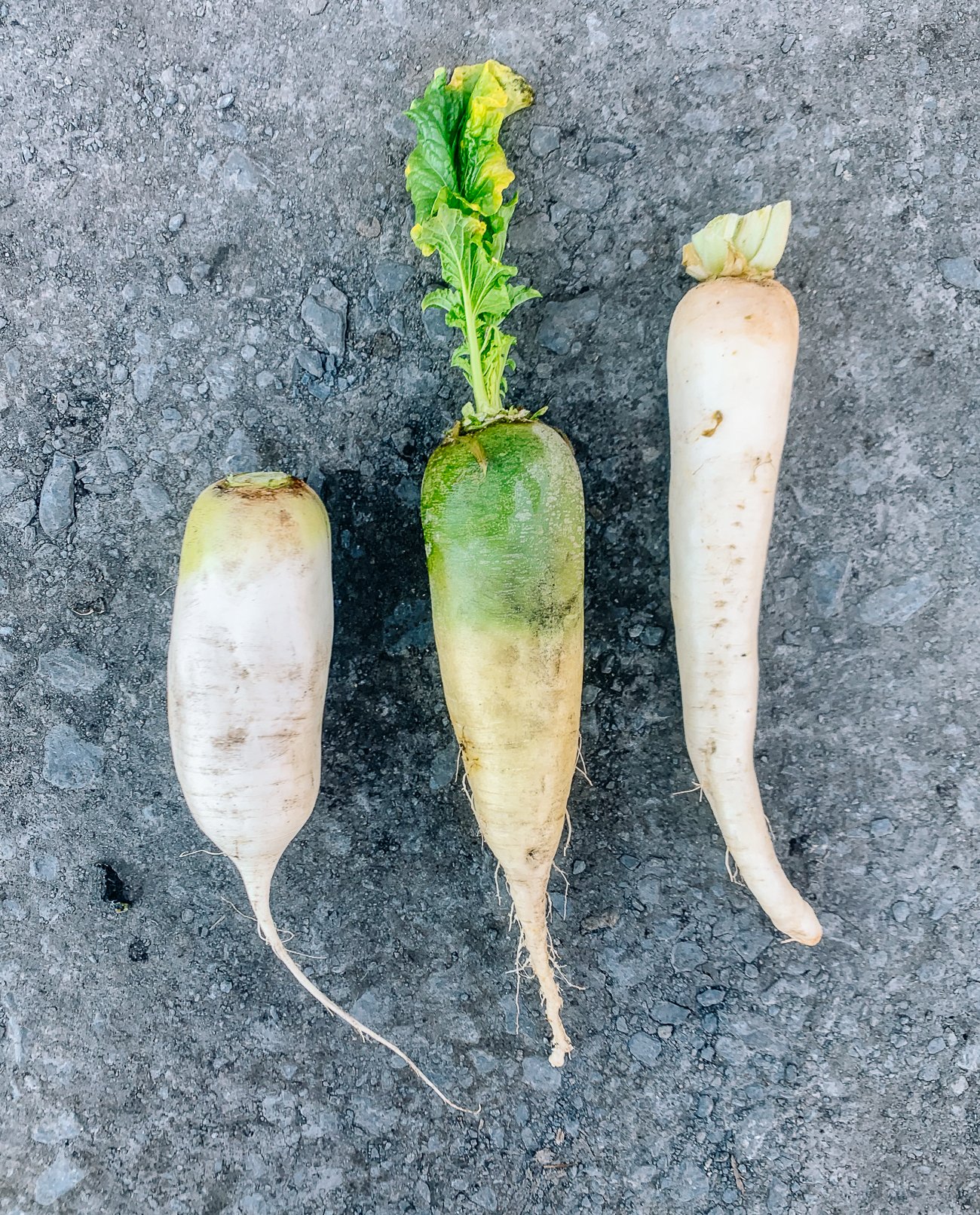
HOW TO GROW DAIKON RADISH FROM SEED
Daikon radishes are a cool weather crop, so they can be planted in spring for an early summer harvest, or in late summer for a fall harvest. According to Christina, fall is much more preferable than spring for most daikon types.
We did not plant any daikons in the spring, and only went for a fall crop, which we are now harvesting a few at a time to enjoy in our meals. While the rest of the garden has kind of gone to bed for the season, the daikon radish is a flush of bright growth!
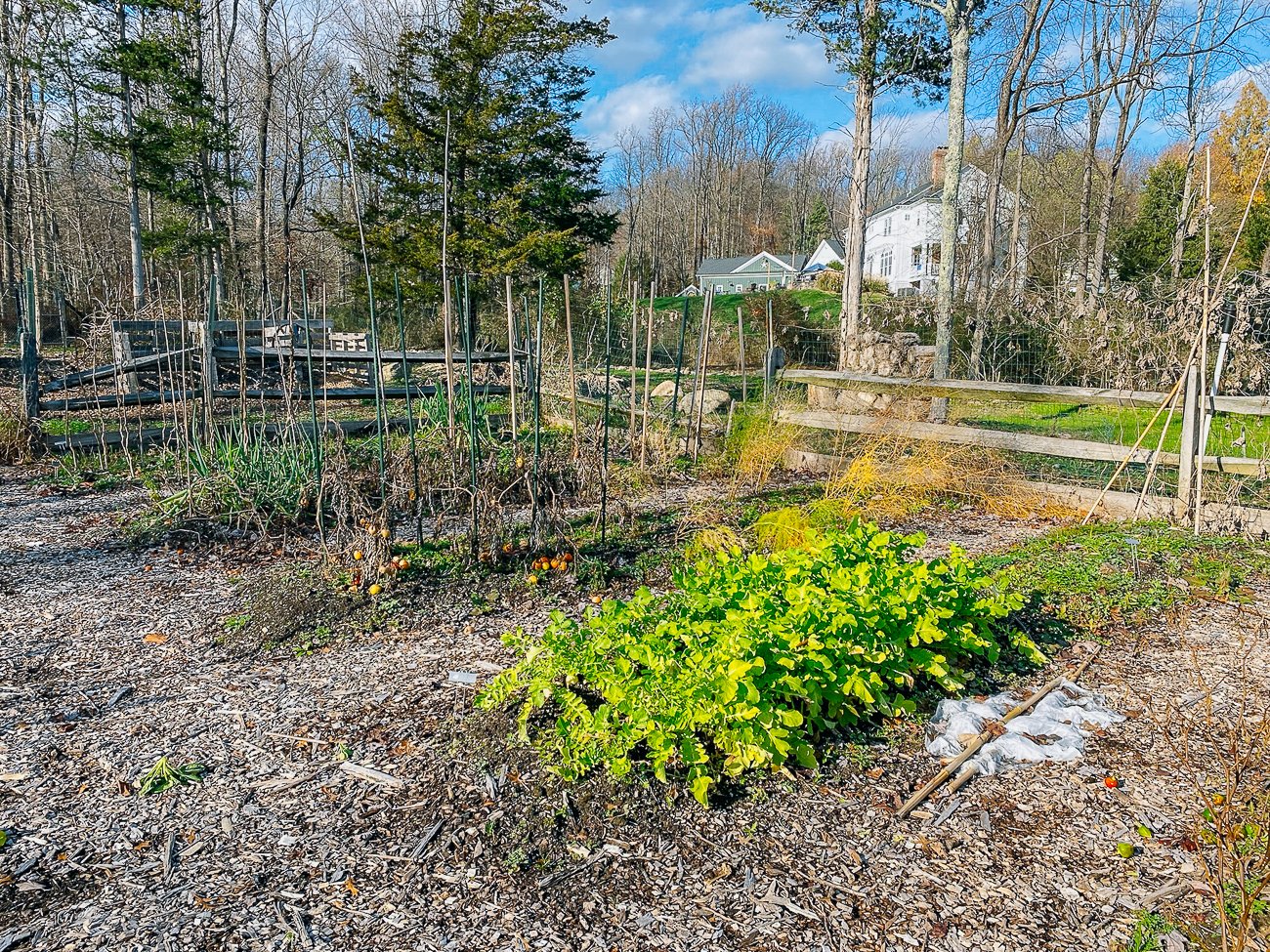
Christina suggests direct seeding daikon radish only, rather than starting them in plugs or seed trays and transplanting. This is also what we did!
While you will harvest them in fall, plant them well before fall begins. Full-size daikon need a longer time in the ground, and do best with a mid-July to early August planting here in the Northeast. You have more flexibility with smaller varieties, as they need less time to reach maturity, but early August is generally when Choy Division seeks to get all their radishes sown.
Daikon radishes are frost-tolerant, with some varieties able to tolerate temperatures down to the mid 20s (Fahrenheit)—around -3°C. In such temperatures, the outer leaves may die back, but as long as there are still green leaves, the plant is still alive.
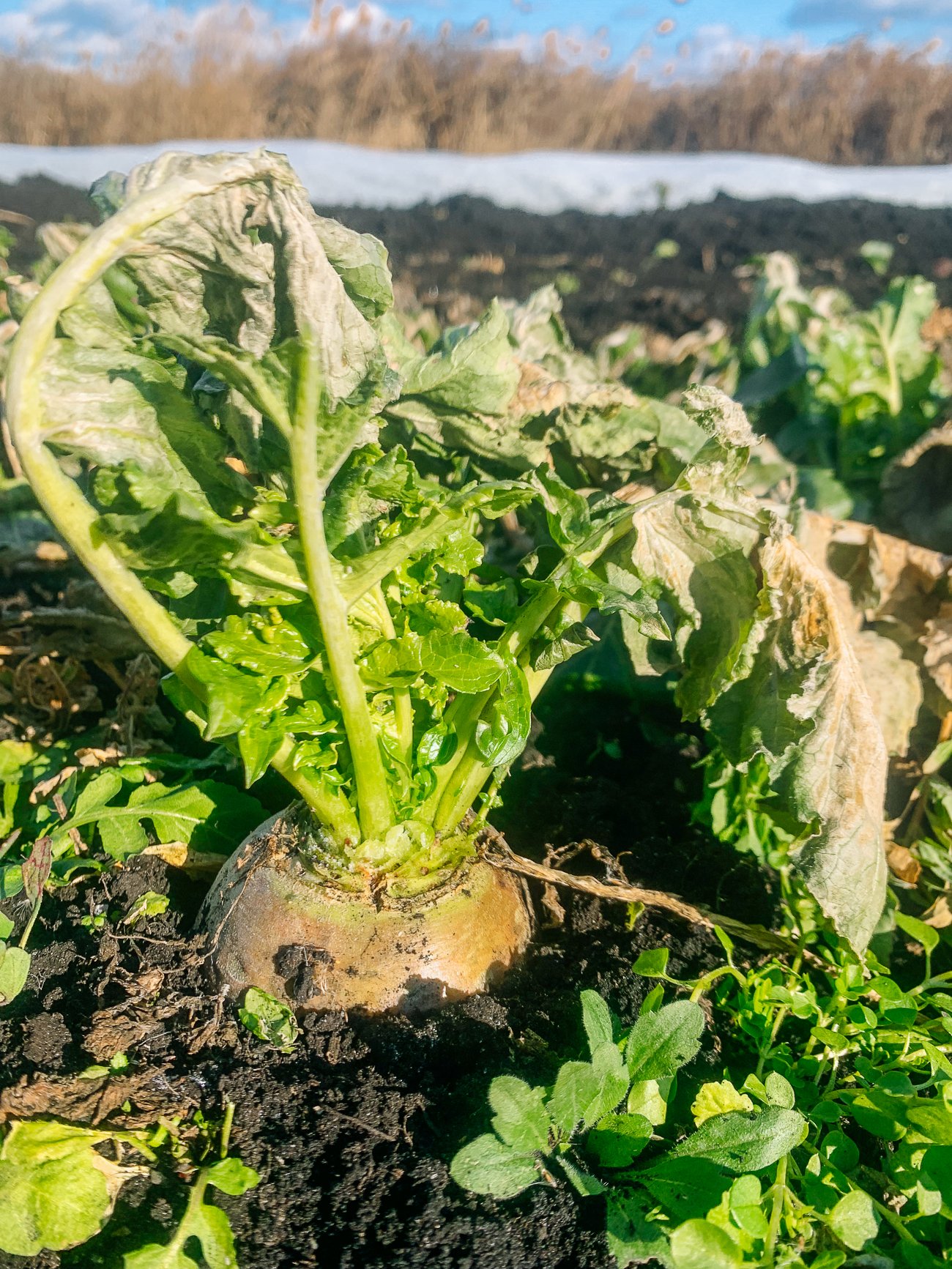
If any of the radish is exposed above ground, check to make sure it isn’t damaged (i.e. mushy or brown, which would indicate freezing and defrosting of that area).
PLANTING
To plant daikon radish seeds, sow them ¼-½ inch (1cm) deep about 1 inch (2.5 cm) apart in a straight line, with rows spaced 12-18 inches (30-45cm) apart—farther apart for larger varieties. After germination, you can thin them to their final spacing.
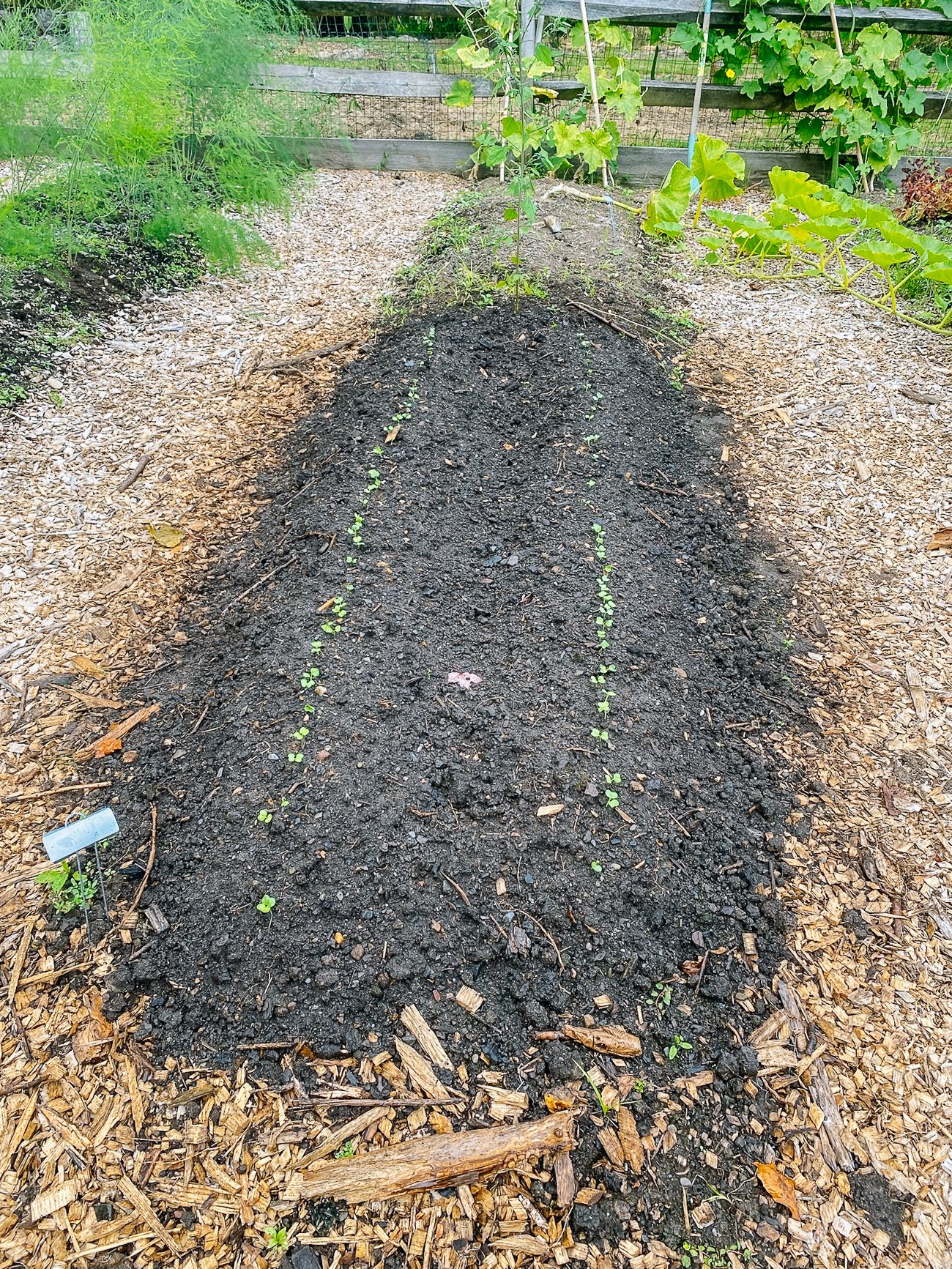
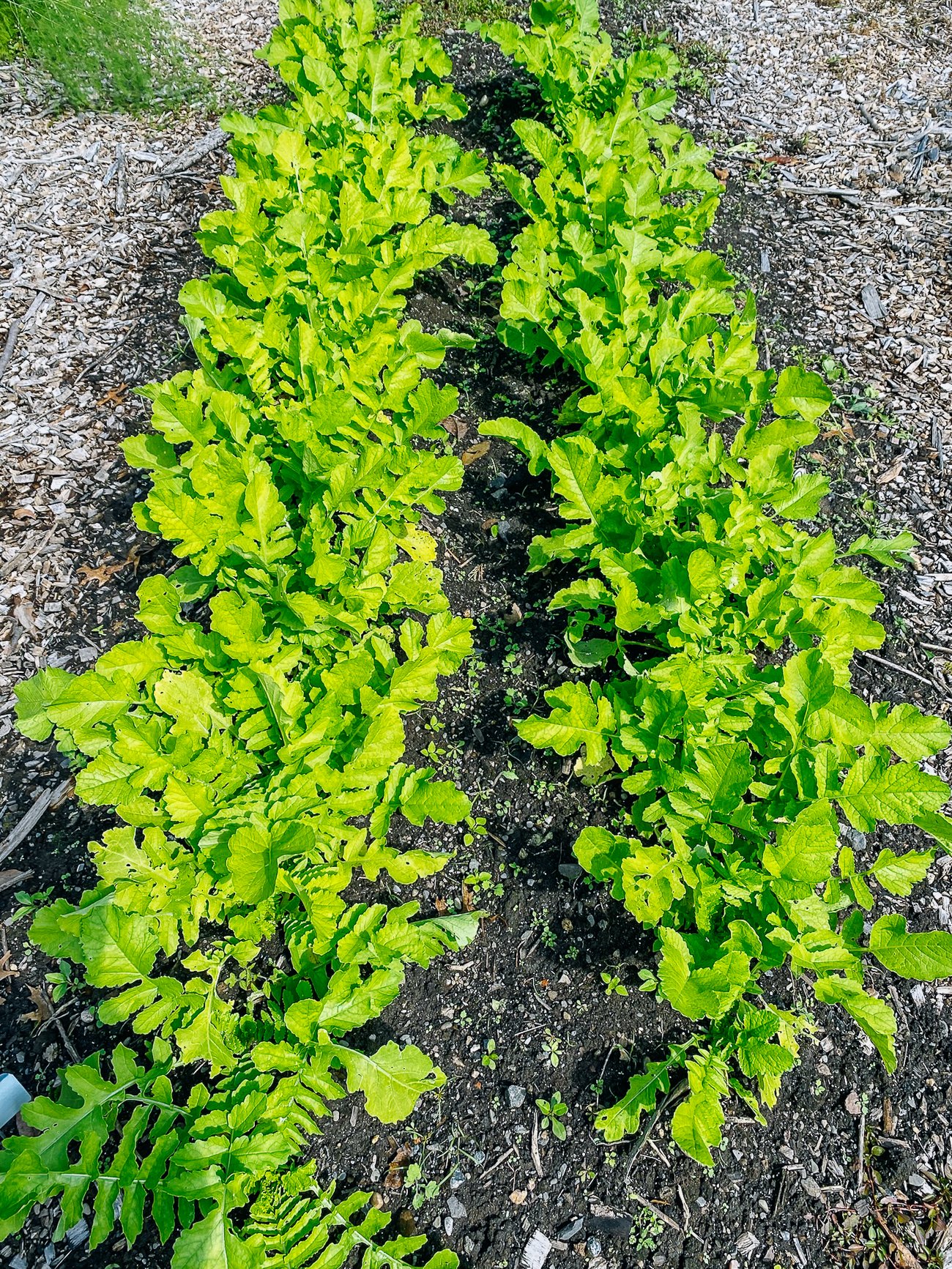
Depending on the type, you can thin the radishes to 3-6 inches (8-15 cm) apart.
Christina’s rule of thumb? The larger the radish at maturity, the more space you’ll need between each one. Full-size daikons will need at least 6 inches (15 cm) of spacing, while 3-4 inches (8-10 cm) will suffice for mini varieties.
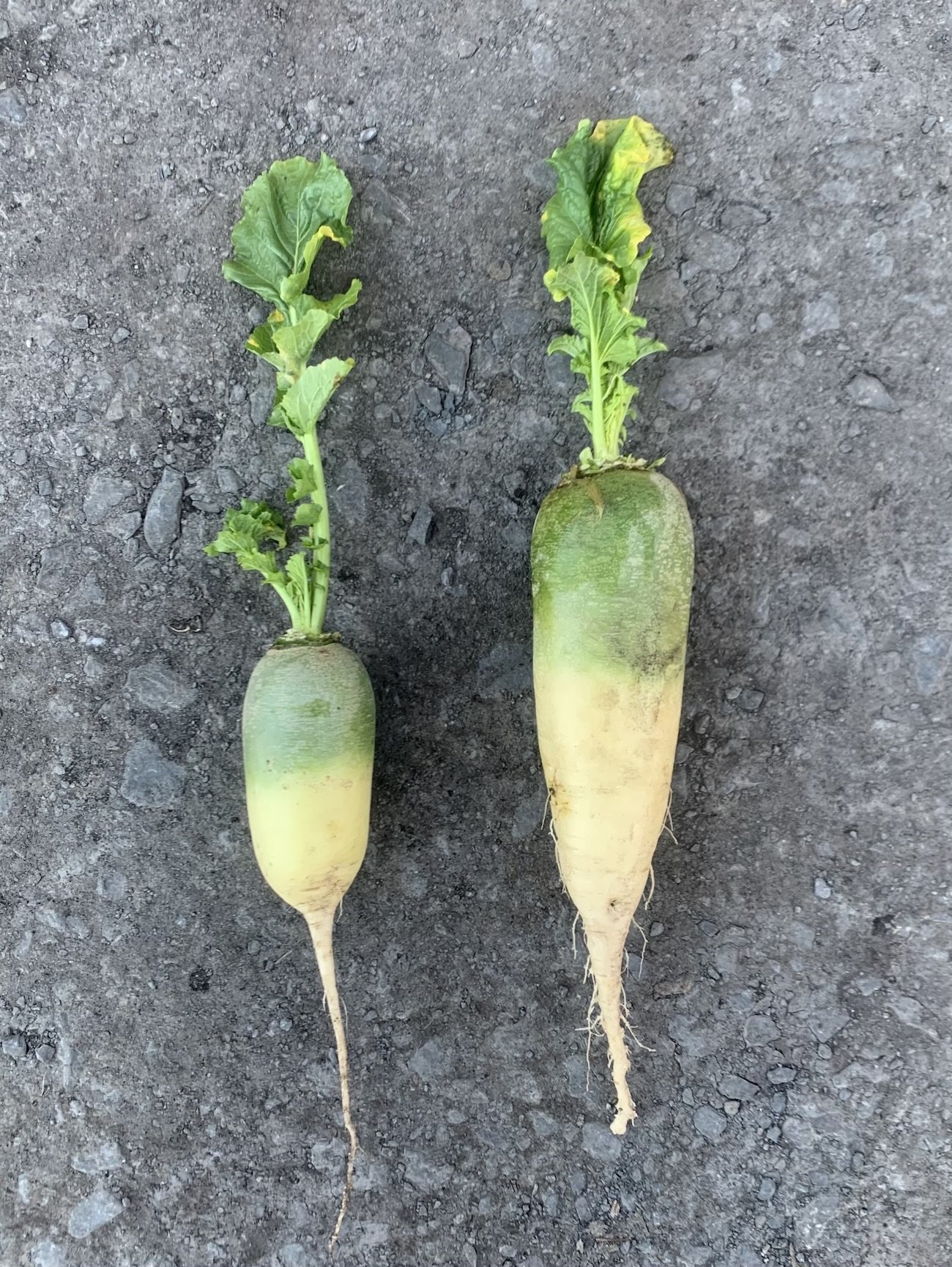
IDEAL GROWING CONDITIONS FOR DAIKON RADISH
These radishes are frost tolerant plants, and will perform best when planted in late summer, when the soil is warm for germination and the temperatures cool as the plant matures. Avoid planting on the hottest days of summer—wait for the weather to cool down a bit. Generally, they grow best with the ideal flavor when air temperatures are around 50-65°F (10-18°C).
Plant radishes in full sun to part shade. Generally, sunny yet cool conditions are best.
Radishes like fertile, well-drained soils that are relatively friable (not compacted) so that the roots can grow deep down into the ground, nice and straight!
According to Christina, they will need water to germinate, but don’t require a ton of irrigation after that, if any. They are good at finding the moisture in the soil to grow. Heavy rains can cause some types of radishes to split, which doesn’t affect flavor but does affect storability. Another reason why radishes are best grown in fall rather than spring, when conditions are less wet.
4-6 inches is ideal, with less spacing necessary for smaller varieties, and a full 6 inches better for large varieties.
About 50-60 days, though some smaller varieties can mature in 30-40 days and some larger varieties need 90 days or more to mature.
OUR EXPERIENCE GROWING DAIKON RADISHES
We generally found these daikon radishes to be a no-fuss crop! We planted our radishes a bit late, around the 3rd week of August, and they germinated quickly.
By then, the drought conditions we’d experienced for most of the summer had eased, and we were getting some rain every week, so they didn’t require any supplemental watering.
They quickly grew strong, healthy foliage, and we didn’t experience any pest problems (we dealt with many more pests in spring!). By late October, we harvested our first small radishes, and we’ve been harvesting them a few at a time ever since, just leaving them in the ground to grow until our next daikon meal.
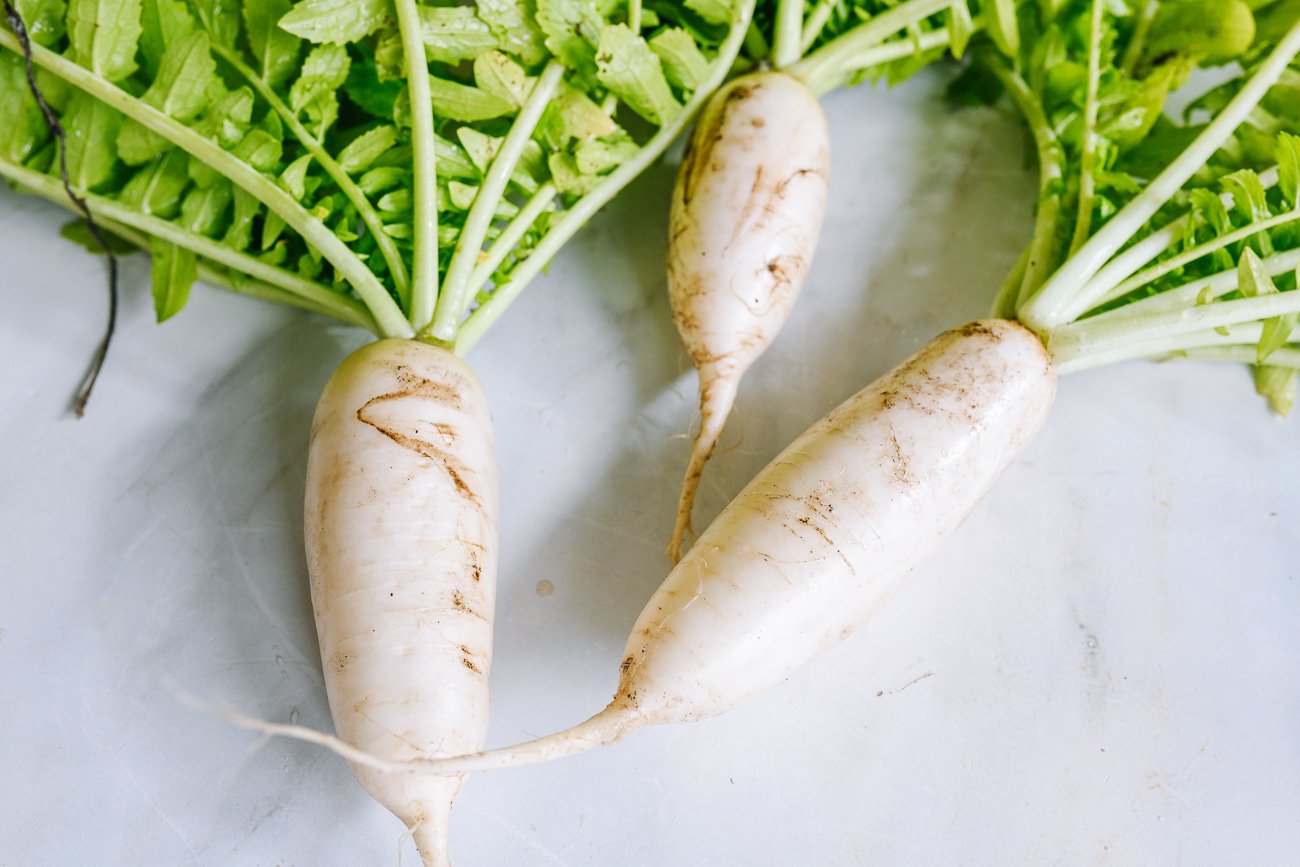
We had a relatively cool fall, with temperatures quickly becoming milder in the second half of September into October. The radishes loved this weather, and were firm and sweet. We’ve been chopping up the radish greens to feed to the chickens and ducks, though you can also eat them! (Try this Daikon Leaves Furikake recipe from our friend Nami at Japanese food blog Just One Cookbook—I’ve made it, and it’s delicious!)
Temperatures are starting to dip down into the mid to low 20s each night, so we’re going to harvest the rest of them now, but we’ve basically had a steady radish harvest for the last 4 weeks!
HARVESTING & STORAGE TIPS
As we just mentioned in the box above, you’ll get a nice, long harvest window for fall-planted daikon radishes. Colder weather and less sunlight drastically slows down their growth, so they can just hang out in the ground, barring any hard frosts.
Harvest radishes like any other root vegetable. Look for the roots’ shoulders sticking out above the ground for an indication that they are ready to be picked.
Give it a firm pull upwards. Or with a very large daikon, give it a gentle tug upward, then wiggle it side to side to loosen it before slowly pulling upwards again, repeating the side to side as necessary, to prevent breakage in ground.
Even after its shoulders poke out of the ground, it will continue to grow. So even if it has emerged, but doesn’t look fat enough yet, you can leave it in the ground to keep growing.
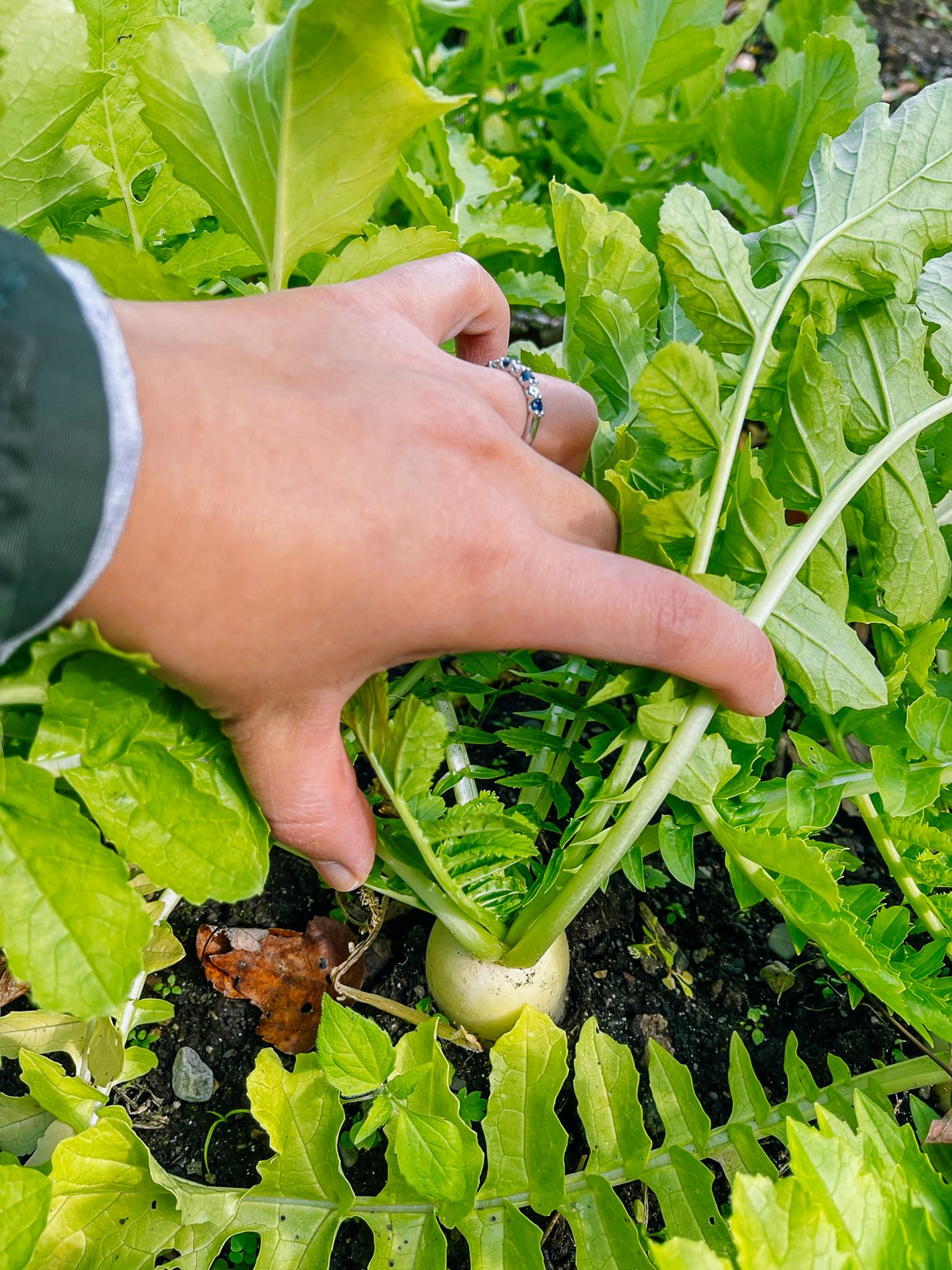
Just be sure to harvest them before temperatures drop to the low 20s for a few consecutive nights.
Like many root vegetables, daikon radishes are great for longer term storage in a cool dry place, such as a root cellar. If planning to store long-term, don’t wash them. Just gently brush off the dirt, and remove the leaves, which will rot much faster than the root.
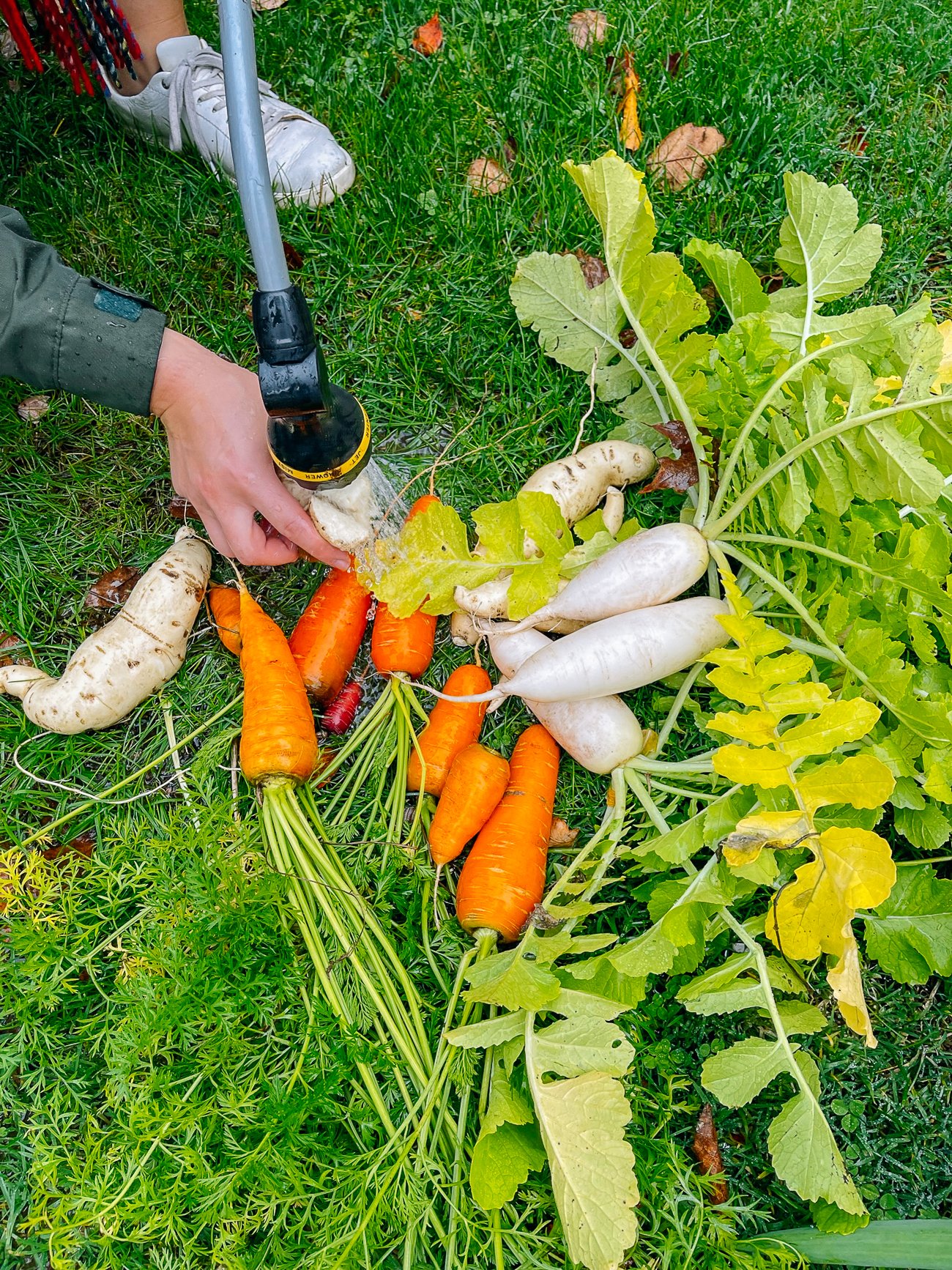
PEST MANAGEMENT
FLEA BEETLES
Like bok choy and napa cabbage, daikon radish can be plagued by Flea Beetles, which are very small, shiny black beetles that jump like fleas and eat tiny holes in the leaves.
You generally won’t see as many of them in fall as in spring. We found this to be true, as our spring-planted napa cabbage were attacked by flea beetles, but our daikon radish greens were basically left untouched.
Generally, this issue is mostly cosmetic, unless you have a really bad infestation. If they’re stressing the plant, you can cover them with floating row covers to create a physical barrier around the veg.
CABBAGE ROOT WORM
These are tiny white larvae in the soil that create channels in the outer (and sometimes penetrate through to the inner) surfaces of your brassica root vegetables. The adults resemble house flies, and lay eggs in the soil. After hatching, they start munching on the radishes.
The best prevention here is also a floating row cover—place over the rows after planting, so that the flies don’t have a chance to lay their eggs in your vegetable beds. Check out our bok choy and napa cabbage posts for more on floating row covers.
If you’ve already seen damage, it’s usually surface level and can be cut away. Sometimes, excessive damage can cause rot in spots, but Christina says that it often does heal over and scar. It doesn’t affect flavor, and is mostly a cosmetic issue.
We hope you’ve enjoyed this post on how to grow daikon radishes, and our series on How to Grow Chinese Vegetables in general!
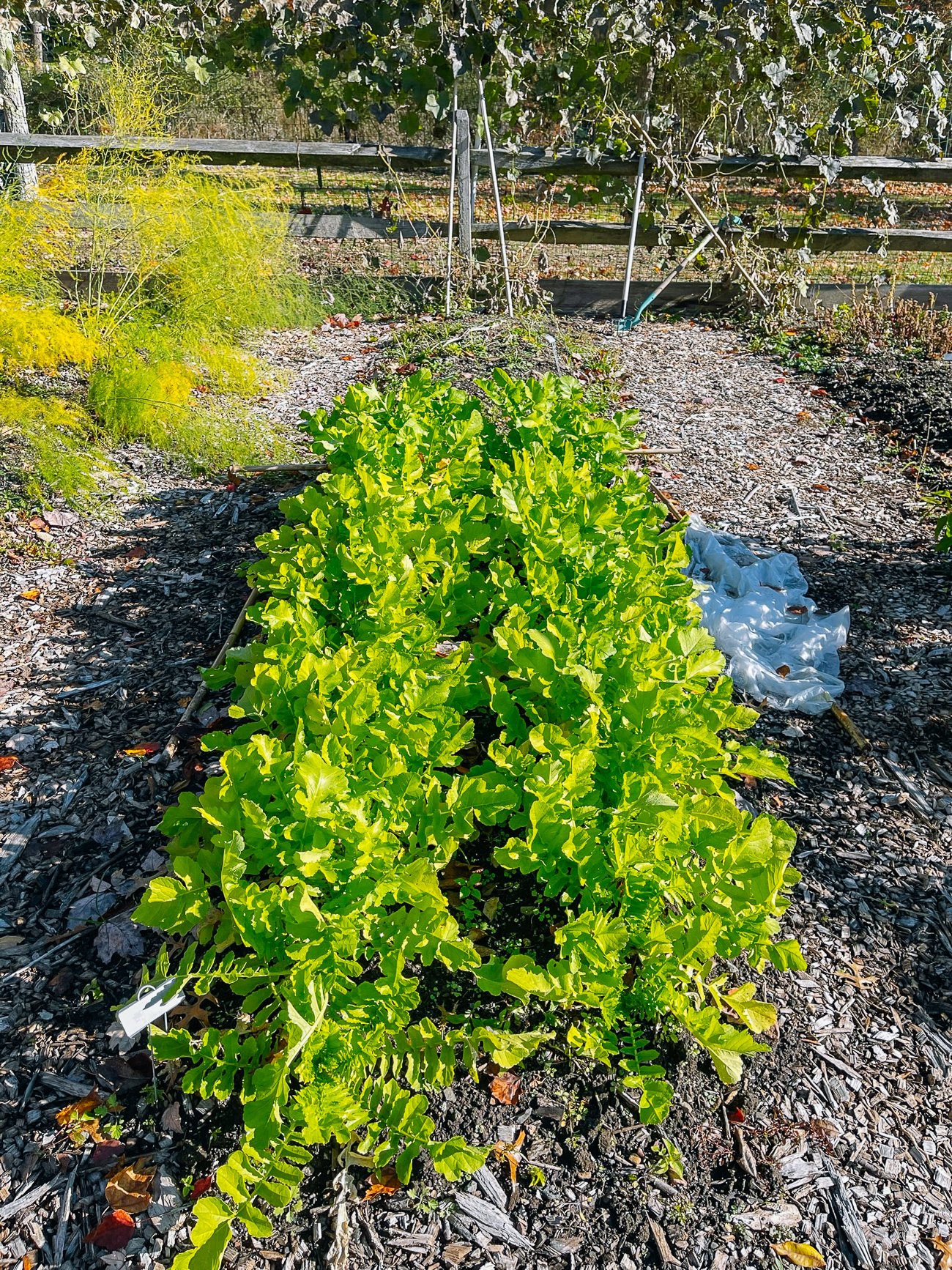
We can’t believe that this growing season is already coming to a close, but it has been so fun documenting our gardening adventures over the past 6 months.
Hopefully these posts help you in your own growing journey next year. This series (with Choy Division again guiding us!) will back next year, with new crops and growing knowledge. Until then, start planning out your veg gardening for next spring!

No comments:
Post a Comment